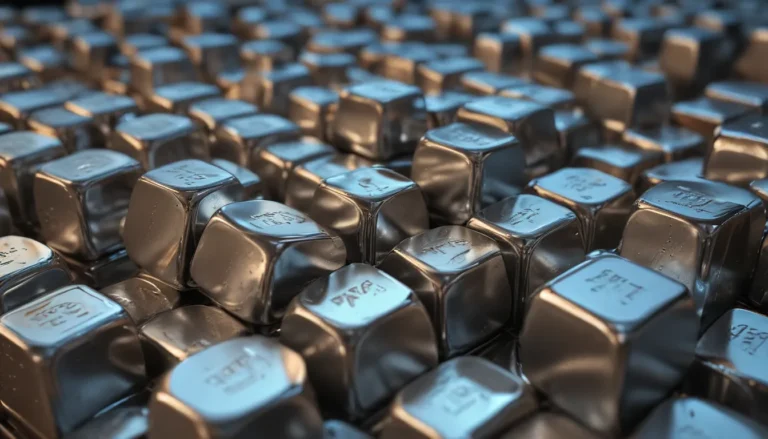A Note About Images: The images used in our articles are for illustration purposes only and may not exactly match the content. They are meant to engage readers, but the text should be relied upon for accurate information.
Saponification, the mesmerizing chemical process behind soap making, holds a myriad of captivating facts that unveil the secrets of this everyday essential. As we embark on a journey to unravel the mystique of saponification, we will unearth 13 extraordinary facts that will not only pique your interest but also deepen your appreciation for this chemistry marvel.
Understanding Saponification
Saponification is the magical process of creating soap by blending fats or oils with an alkali, such as sodium hydroxide or potassium hydroxide. This chemical reaction results in the formation of soap and glycerol, producing a cleansing powerhouse that we rely on daily.
The Historical Tapestry of Soap
Soap has a rich history dating back thousands of years to ancient civilizations like Mesopotamia, Egypt, and Rome. Early soap concoctions involved a blend of animal fats and ashes, showcasing the ingenuity of our ancestors in harnessing the power of saponification.
The Science Behind Soap Making
Soap production is not just a chore; it’s a delightful fusion of precise measurements and creativity. Various techniques like cold process, hot process, and melt and pour add unique characteristics to soap, making it a harmonious blend of art and science.
The Allure of Glycerin
Glycerin, a byproduct of saponification, adds a touch of moisture to skincare products. This natural humectant derived from fats or oils during the soap-making process soothes and hydrates the skin, showcasing the versatility of saponification.
Unveiling the Surfing Secrets of Soap
Soap, as a surfactant, deftly reduces surface tension, allowing it to cleanse and remove dirt and oils with ease. This surfactant prowess stems from the chemical wizardry of saponification, making soap a trusted ally in our daily hygiene routines.
Embracing Scent and Color in Soap
Enhancing the sensory experience, soap can be adorned with essential oils, fragrance oils, and botanicals during saponification to create captivating scents. Vibrant colorants further elevate the visual appeal of soap, adding a touch of artistry to the science of soap making.
The Versatility of Soap Forms
From solid bar soaps to liquid formulations, saponification showcases its adaptability by yielding diverse soap types. Each form offers distinct benefits, with liquid soaps often requiring additional ingredients to maintain their desired consistency.
The pH Balance of Soap
Due to the alkaline nature of saponification, soap typically exhibits a pH level above 7, making it mildly basic. This pH balance plays a crucial role in enhancing the cleansing properties of soap, ensuring an effective and gentle cleaning experience.
Unraveling the Complexity of Saponification
Behind the scenes, saponification orchestrates a complex chemical symphony involving multiple reactions and intermediates. The intricate mechanisms at play during soap making highlight the intricate dance of fats, oils, and alkalis in creating this everyday essential.
Soap Making: A Fusion of Art and Science
Crafting soap is a harmonious blend of meticulous measurements, temperature control, and chemical know-how. While science governs the process, the artistry of soap making allows for creative expression through ingredient selection and technique application.
Customization and Personalization of Soap
The properties of soap are as varied as the ingredients used in its creation. Fats, oils, additives, and essential oils all contribute to shaping the final characteristics of soap, including its hardness, lather, moisturizing qualities, and fragrance.
Beyond Soap Making: Saponification in Various Industries
While soap production remains saponification’s primary domain, its versatility extends to diverse industries. From biodiesel production to cosmetics and pharmaceuticals, saponification’s chemical prowess finds applications far beyond the realm of soap making.
In Conclusion
Saponification serves as a gateway to the enchanting world of soap making, offering a glimpse into the intricate chemistry that underpins this everyday commodity. By uncovering the extraordinary facts of saponification, we gain a deeper appreciation for the art and science of soap making, elevating our understanding of this essential chemical process.
FAQs
Q: What is saponification?
A: Saponification is a chemical reaction that converts fats or oils into soap and glycerol by reacting with an alkali.
Q: What is the history behind saponification?
A: Saponification dates back thousands of years, with ancient civilizations like Mesopotamia pioneering soap production using animal fats and ashes.
Q: How does saponification work?
A: Saponification breaks down ester bonds in triglycerides, allowing fatty acids to react with an alkali to form soap and glycerol.
Q: What are common applications of saponification?
A: Saponification finds use in soap, cosmetics, detergents, food, pharmaceuticals, and biodiesel production.
Q: Are there different types of soap?
A: Yes, saponification yields various soap types, including bar soaps, liquid soaps, and specialized formulations.
Q: What is the environmental impact of saponification?
A: While natural soap making is eco-friendly, synthetic ingredients in commercial soaps can have negative ecological consequences.
Embark on a Journey of Discovery
As we delve into the enchanting realm of saponification, we uncover the profound interplay of art and science that defines soap making. From the ancient origins of soap to the versatile applications of saponification in modern industries, the journey of exploration is as captivating as it is enlightening. So, embrace your curiosity, dive into the world of soap making, and let saponification’s extraordinary facts inspire your quest for knowledge and discovery.






